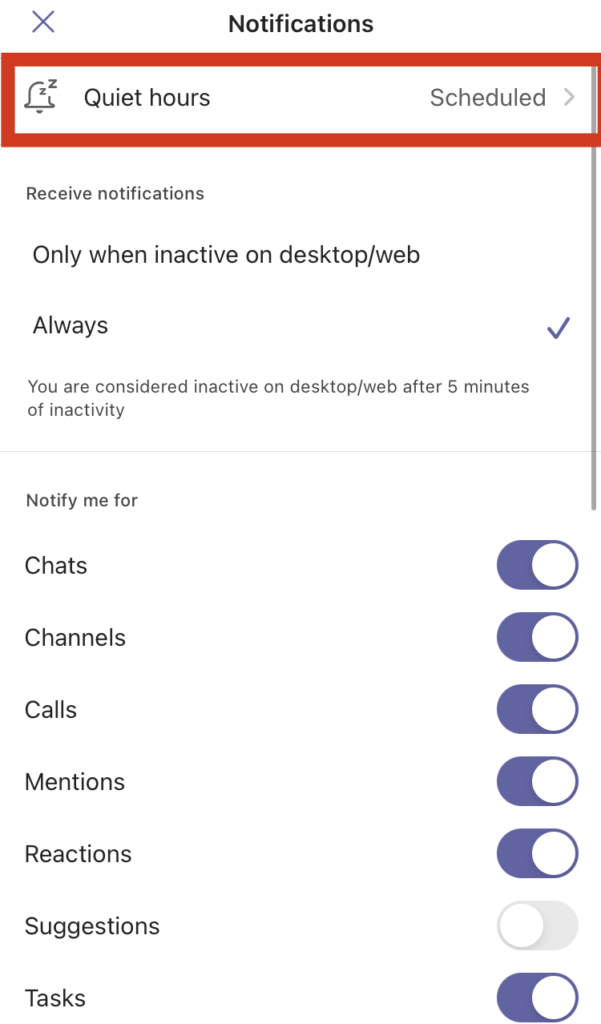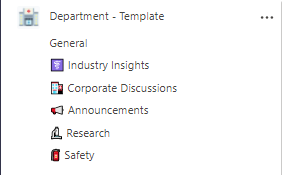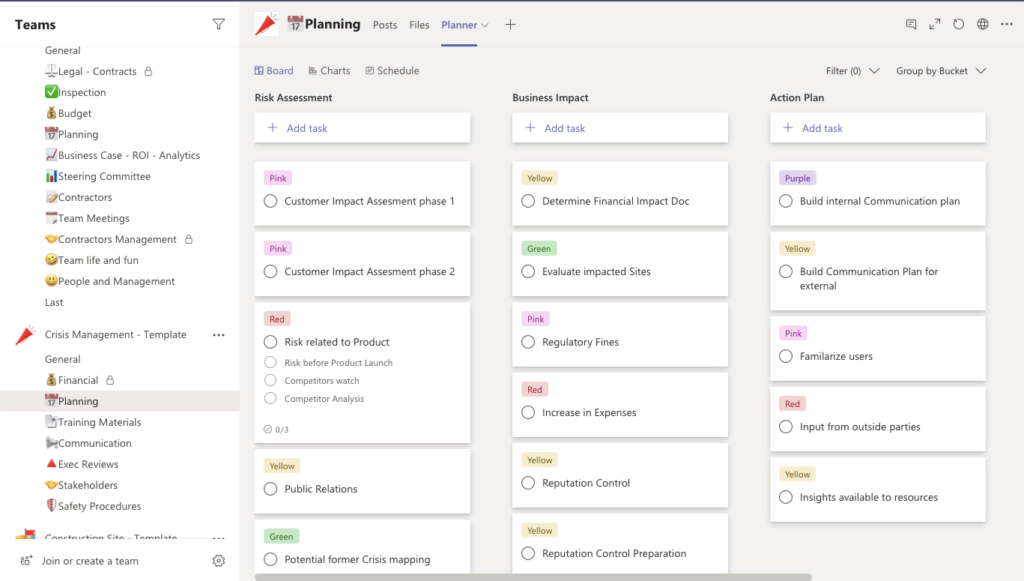Being a leader is a truly rewarding experience. Watching your team grow, celebrating first wins and seeing that all your team efforts paid off makes you feel fulfilled and proud. However, leadership is never easy. It comes with numerous challenges that you have to fight your way through every day, especially now that everything is run remotely. But you’re not alone in this fight: today, digital collaboration tools allow us to manage any project through its multiple capabilities, helping managers address new leadership challenges.
Leadership challenges that you can tackle with Microsoft Teams
1. Dealing with change
Most of us had to make a drastic switch in the way we were doing work in the past years. Many people lost their jobs, and those he didn’t were still on the edge, wondering about their job stability and company’s future.
This feeling of uncertainty has a negative impact on workers’ productivity. Plus, transitioning to remote working with subsequent change in the way the company operates, slows down teams’ performance as it takes time to adjust to the new way of working.
This all falls on managers’ shoulders whose job is to help their team adapt and respond to the change quickly and smoothly.

Digital collaboration tools, and in our case, Microsoft Teams, can help you address these leadership challenges. Regular communication and transparency are key to increasing the sense of stability among the employees. Senior management can organize company-wide meetings, communicating on states of affair of the company.
You can also make regular posts in cross-organizational team or Yammer community, keeping your staff updated in current events.

Additionally, Microsoft Teams supports remote working, helping your employees keep up their performance while doing home office. While Microsoft Teams Collaboration Templates that can be tailored for any business scenario, will improve end-user experience, save time on creating teams and help set up governance policies that your organization requires.

Learn more about how to structure remote work with Microsoft Teams templates and how to make remote work more efficient with Teams.
2. Promoting the company work culture
Fostering the company work culture is one if the key responsibilities of a manager. It unites all the employees under the common mission, makes them feel motivated to get the company to success and promotes loyalty to the firm, leading to better retention rates. But doing so remotely is becomes one of the key leadership challenges since managers are not used to communicating about work culture through the screen.
Work Culture Guide
There are ways to promote your company work culture by using digital collaboration tools such as Microsoft Teams. One way of doing it is by creating a ‘culture guide’ in a SharePoint site and making it visible by adding it as a tab in the right channel so that everyone could see it. In this guide you can describe the company’s vision and mission, values and priorities, short-term and long-term goals and anything else that represents its culture.
You can even encourage your employees to contribute to creation of your Culture Guide, making it resonate with every member of your organization.
Virtual rituals
You can also create your own virtual traditions and rituals. For example, you can set up a day where everyone shares their accomplishments during the week in a specific channel. Or maybe you can post a random question like “what would constitute a perfect day for you?” and everyone could share their thoughts. It will allow your team members to get to know each other better and feel more connected.

If you wish to learn more about how to build a remote work culture, head over to this article.
3. Staying productive
Staying productive when you have to balance your own workload with managerial responsibilities can be tricky. You want to make sure you’re there for your team when they need you, but it can be overwhelming at times to handle so many tasks. The last thing you want is to overburden yourself and burn out.
There’s a couple of things you can do to address this leadership challenge.
Delegate tasks
First, you can delegate a particular task if you know that someone else in your team can help you out. If you’re managing your tasks with Microsoft Planner, it’s very easy to do so without wasting time on briefing the person on details of the task. All you need to do is assign the right person (or a group of people, if needed), attach files or add links, set the timeline, and add notes and checklists, explaining the task. You can also set up the level of priority.

We highly recommend using Planner for task management. It helps organize all the workload, thus keeping you focused on the most important task.
Avoid distractions
Another way to stay productive is to avoid any distractions. Set up focus time in your calendar in Microsoft Teams every day for a couple of hours. It’s really surprising how much work can be done in just 2-3 hours if you don’t receive any notifications and don’t need to have to reply to messages from colleagues.

You can also decide to set up focus days free of any meetings. This will benefit your whole team, allowing them to finish their job much faster than usual.
Read this article to fin out how to create your Focus Plan.
Disconnect

And finally, to prevent yourself from burning out, it’s essential to ‘switch’ from work outside working hours. It isn’t recommended to bring your work home. It only increases your anxiety and doesn’t let you have the rest you need.
All you have to do is to configure quiet hours and quiet days (during the weekend, for example) in your Microsoft Teams app settings.
4. Keeping the team inspired and motivated
There are multiple ways you can keep your team motivated and productive even if you’re far away from each other. It’s just the question of your creativity😊
Here are a few tips for maintaining a team spirit with Teams.
Schedule regular casual team meetings
They don’t have to be long or have a specific agenda. Just once a week allow your team members to just chat for 15-30 minutes. This will make up for their lack of social interaction over morning coffee or lunch breaks.

Don’t forget about our need for recognition
When we feel that our work is appreciated we get inspired and wish to work even harder. Cross-company meetings, live events and posts in corresponding chats are some ways to share big wins with the rest of the company and give credit to those who deserve it. Sharing feedback in 1:1 meetings and being there for your team members when they need you is also essential in keeping them motivated.
If you’re interested in knowing more about how to raise your team productivity, don’t miss this article.
5. Keeping everyone on the same page
Miscommunication is a common issue when working in a team, especially when it’s done remotely. However, there are some tactics that can help you keep it at bay.
Guidelines
You can clearly express every team member’s responsibilities in working guidelines that you can create in a SharePoint site or in a Wiki tab in the General channel of your main team. This way, all your team members will know exactly what part of the team’s work they’re owning.

Channels

Additionally, you can create channels that will correspond to every topic that your team can discuss. This will structure your conversations, improving team communication.
Planner
To coordinate better your team’s activities, you can use Microsoft Planner with Teams. This tool allows you to set up tasks, divide them into categories and give labels, add checklists and notes, set priority level, attach files, and assign them to the right people in your team.

With this tool your team members will know exactly what to do and won’t get lost among multiple tasks.
Co-authoring
Furthermore, with Microsoft Teams your team can work on files simultaneously. All they need to do is to create or upload the needed document into Files tab in the right channel and share the link to it to everyone who has to collaborate on the file. This will save you a lot of time, eliminating the need to wait for one member of the team to send everyone an updated version and only then work on it. Plus, it’ll allow to avoid files duplication. You can track all the changes made in the document, and even have discussion and leave comments.

If this doesn’t keep your team on the same page, what will? 🙂
6. Onboarding new team members
Onboarding new employee is one of the key leadership challenges, but doing so remotely only complicates the process. How do you integrate a new member of the team, instill the company work culture and communicate well on expectations, responsibilities, and deliverables?
Previously we covered how to promote company’s work culture among the staff. With new employees, your main task will be to have regular 1:1 explaining them the job role and providing feedback on completed tasks. It’s also essential to have team meetings – both work-related and casual virtual coffee breaks and teambuilding events. This will allow your new team member to get to know everyone better, develop team spirit and feeling of belonging.
You can also leverage Microsoft Planner in Teams to prepare all the onboarding tasks. In order to save your time and nerve on creating a new team and adding all the tasks and files each time you hire a new employee, you can use Microsoft Teams templates. With this capability, you will only need to build your onboarding team once and make it a template. Then, you can create multiple pre-built teams in just a few clicks with already configured Planner and other tabs and uploaded files.

If you’d like to know more about how to onboard new employees with Microsoft Teams, head over here.
7. Communicating with the entire staff
If you work in a big company it can be challenging to communicate with all the employees across the organization when operating remotely. At some point you will need to make an important announcement, celebrate a big win or anything else that deserves attention of the entire staff. Doing so just by making a post in Teams or Yammer just doesn’t seem to give enough credit to the event.
There is a solution, though. With Microsoft Teams you can organize a live event and invite every employee to attend. Live events encourage connection throughout the entire engagement lifecycle with participants before, during, and after live events.

If your organization has branches in other countries and not everyone speaks the same language, it wouldn’t be a problem either. Microsoft Teams Live event capability allows you to turn on live captions and subtitles.
There you have it – 7 leadership challenges that Microsoft Teams can help you overcome. Microsoft Teams is not a magic wand that will solve all the issues regarding managing a team. However, it can offer you all the right tools that can definitely make it easier for you to lead a team when working remotely.
